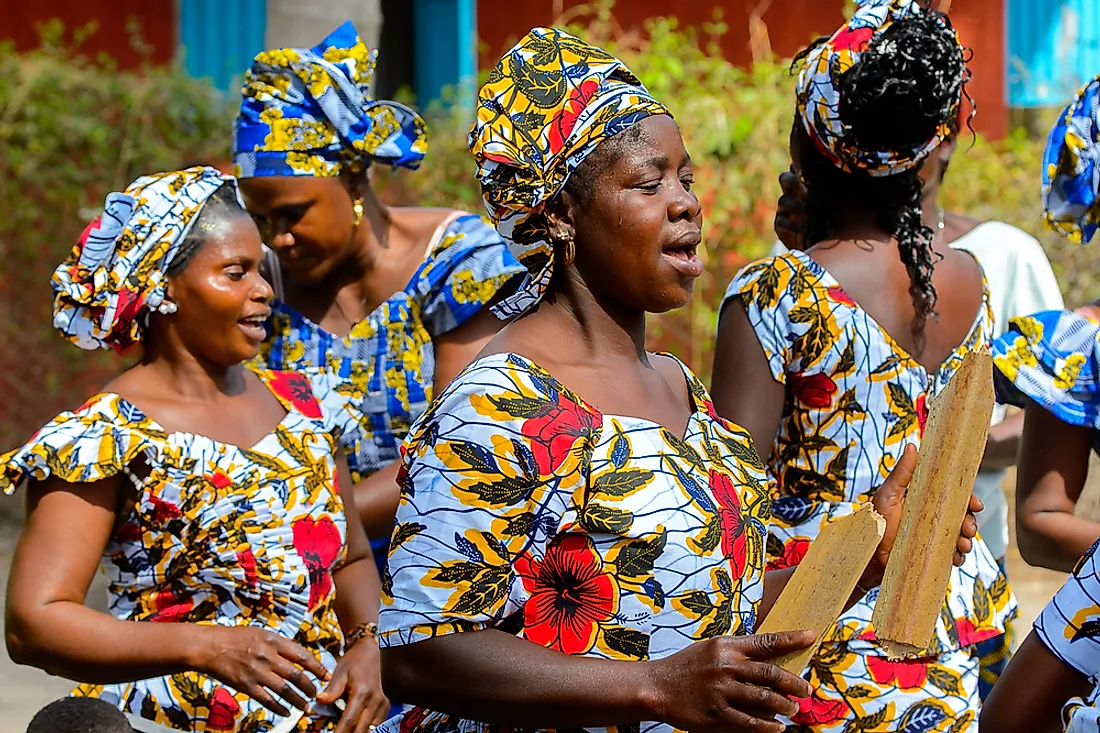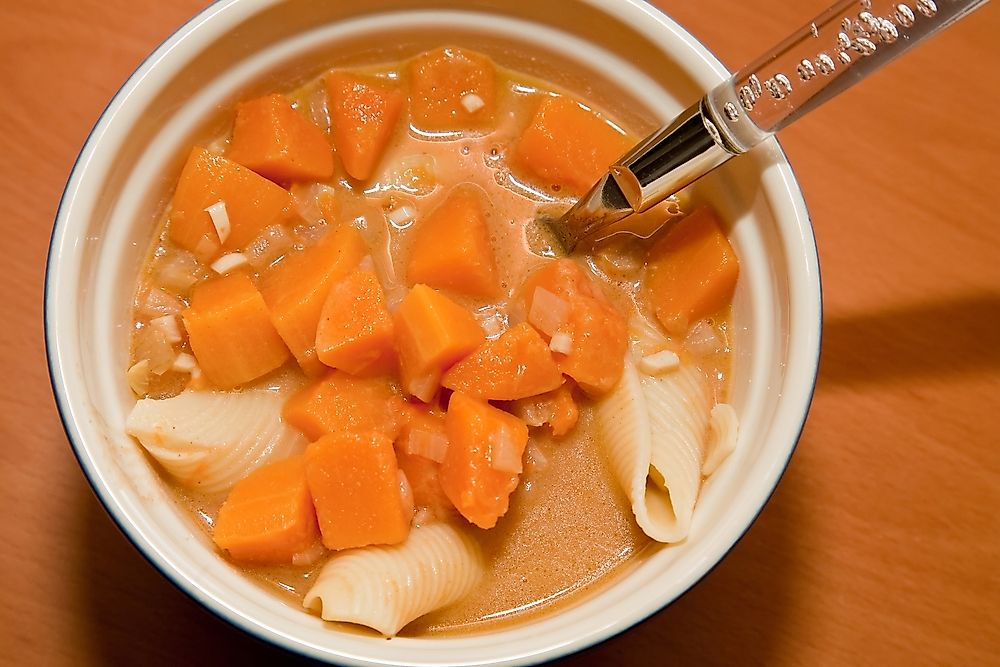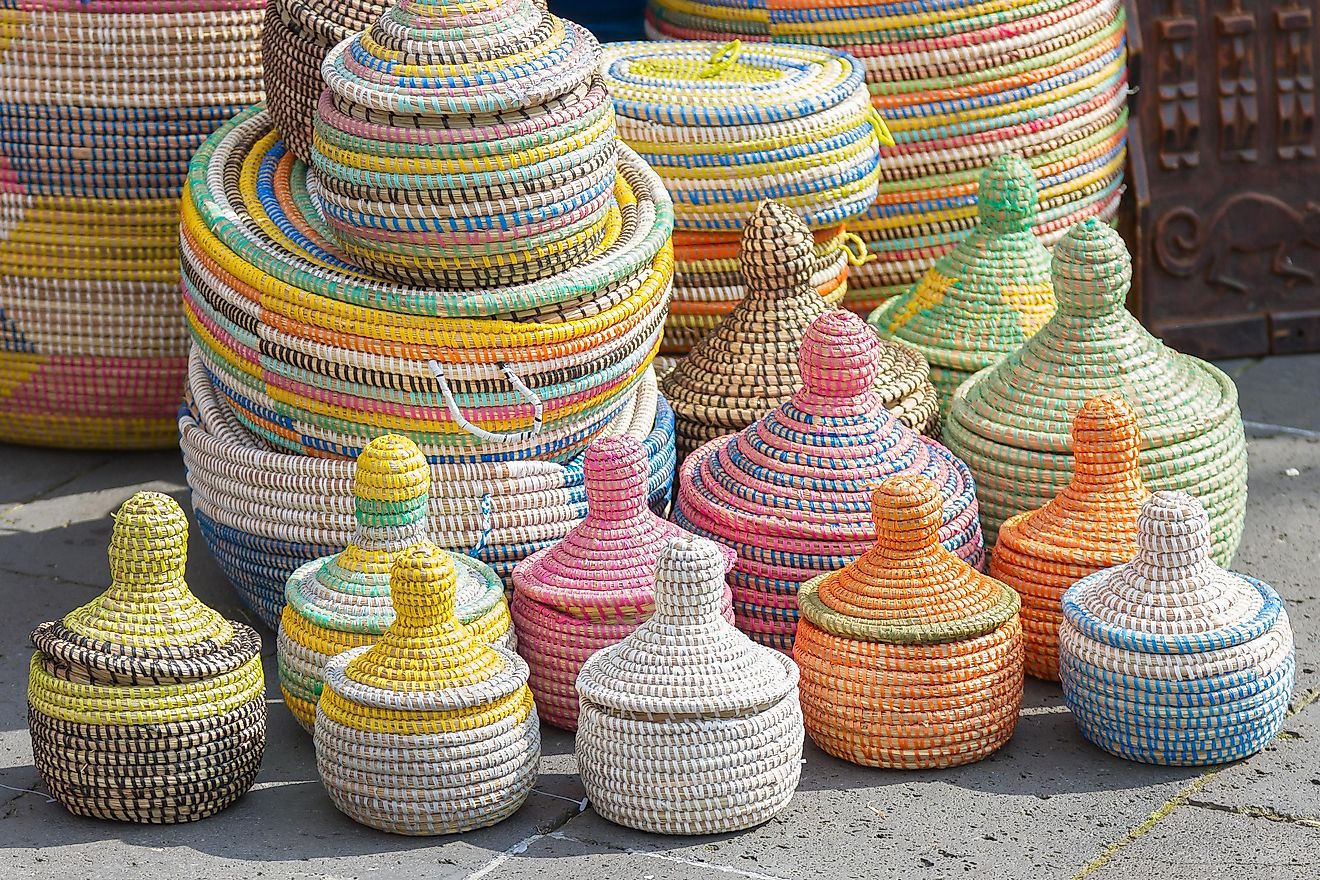The Culture Of Senegal

The West African country of Senegal is home to a diversity of ethnic groups whose individual cultures contribute to the richness of the Senegalese culture.
Ethnicity, Language, And Religion
Senegal hosts a population of around 15,020,945 individuals. The Wolof (37.1%), Pular (26.2%), and Serar (17%) are the three largest ethnic groups living in the country. French is the official language of Senegal. Wolof, Pular, Mandinka, Soninke, Jola, etc., are some other languages spoken in Senegal. Nearly 95.9% of the country's population is Muslim with most adhering to one of the four main Sufi brotherhoods. Christians, mostly Roman Catholics, account for 4.1% of the population.
Senegalese Cuisine

The Senegalese cuisine reflects influences of North African, Portuguese, and French cuisines. Fish is a very important part of the cuisine. Other sources of protein come from chicken, beef, lamb, and eggs. Pork is not consumed in the country since Islam is the religion of the majority of the population. White rice, couscous, lentils, sweet potatoes, and black-eyed peas are the staples of the diet. Common dishes include rice, couscous, or bread served with stewed vegetables or meats. Coffee, tea, and fresh fruit juices are the most popular beverages. Thieboudienne is a traditional dish of Senegal and is made from fish, rice, and tomato sauce.
Clothing
Western-style clothing is worn in the urban areas of Senegal. Men generally wear shirts and trousers and suits on special occasions. Women wear long dresses with headscarves. In more traditional settings, the boubous, a loose-fitting cotton tunic with large openings under the arms, is worn. Depending on the occasion, the boubous may be plain white or elaborately embroidered. Women often wear matching headscarves with the boubous.
Literature, Art, And Craft

Like most other African countries, Senegal has an age-old tradition of storytelling. Written literature of Senegal is regarded as amongst the most important in West Africa. Most works have been published in French. Published works in Arabic, Pulaar, and Wolof also exist. Léopold Sédar Senghor is one of the most globally renowned Senegalese poets. Women writers have been active in recent years. Mariama Bâ, a female Senegalese writer, is known for her writings related to the polygamous society in the country.
A wide variety of crafts are produced by Senegalese craftsmen. Senegalese glass paintings are widely appreciated. Basket-weaving, mask-making, wood carving, textile painting, etc., are some other crafts from the country.
Performance Arts
Senegalese music is most famous for the mbalax, national popular dance music of the country. It is a fusion of popular music like jazz, soul, Congolese rumba, rock, etc., from the diaspora with sabar (traditional drumming music of the Wolof of Senegal). The traditional music of the country has been influenced by the Malian Empire but is faster and livelier than the sounds of the Malian griots. The various ethnic groups in the country have their distinct music and dance styles that are performed during religious ceremonies, weddings, and other such occasions.
Sports
Football, wrestling, and basketball are the most popular sports played in the country. Wrestling is regarded as a national obsession as it allows many young men to earn some living and thus escape poverty. Football is played both professionally and informally throughout the nation. The national football team of Senegal became the runners up at the 2002 Africa Cup of Nations. It also became one of only three African teams to reach the quarter-finals of the FIFA World Cup. Senegal’s national basketball team is among the best in the continent. In 2022, Senegal is set to break the records by becoming the first African country to host the Olympics. The 2022 Summer Youth Olympics is scheduled to be held in Senegal.
Life In Senegalese Society
Men dominate Senegalese society. Gender-based roles are highly prominent. Women are expected to manage the household and children. In rural areas, they also participate in the agricultural workforce but are paid lower than men. In the household and community, men have the final say in most matters. Women are expected to obey men. Although urban Senegalese women are entering the workforce today, the numbers are still quite low.
Marriages in Senegal are usually arranged by the parents of the bride and groom but marriages by consensual choice are also increasing. When a man selects a bride, the man’s family usually visits the bride’s family and gifts them kola nuts. The bride’s parents accept the kola nuts if they approve of the young man. Other gifts are also given to the bride’s family. Marriages are mostly conducted at the mosque by an iman or Muslim religious leader. A civil marriage then follows at the family court or city hall. After marriage, the bride moves into the groom’s family.
Polygynous marriages are quite common. Households are often large comprising of a man and his multiple wives and children. The man’s parents and other relatives might also share the household. Inheritance is usually in accordance with Islamic laws. The traditional social structure is rigid and based on kinship. Children are highly valued in Senegalese society. Children are taught social values since an early age. The entire community participates in bringing up children. Boys and girls start learning their gender-based roles while they are young. Education is available to both sexes but fewer girls than boys get to complete their primary education.
The wisdom of elders is highly revered by the Senegalese. Respect for the elders is of utmost importance in the society. Foul language is not tolerated in public. A person who abides by the societal rules has a higher social rating than those who do not.











